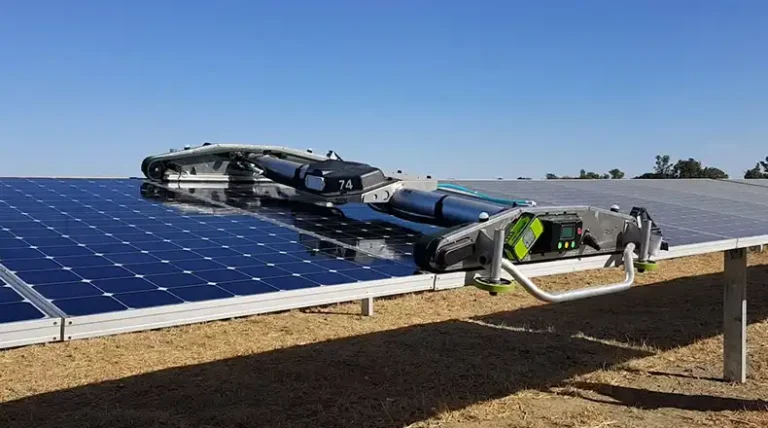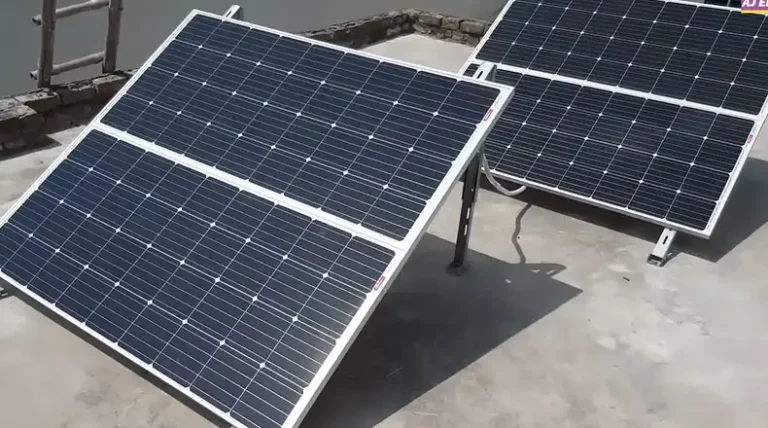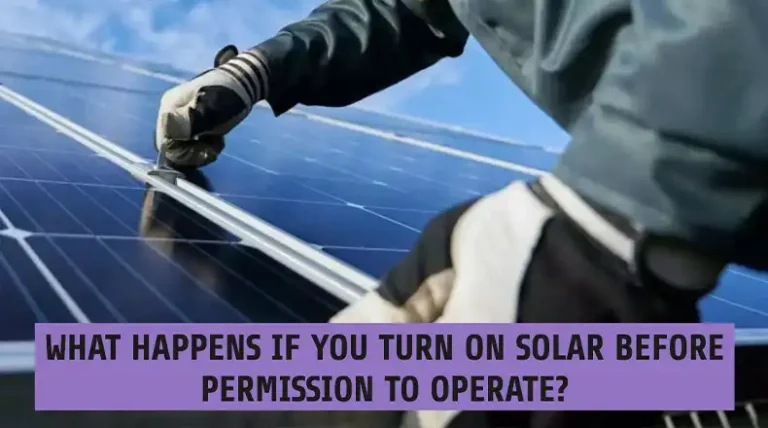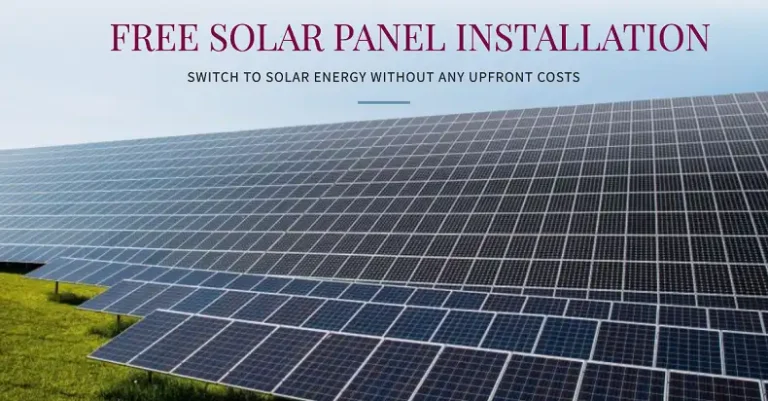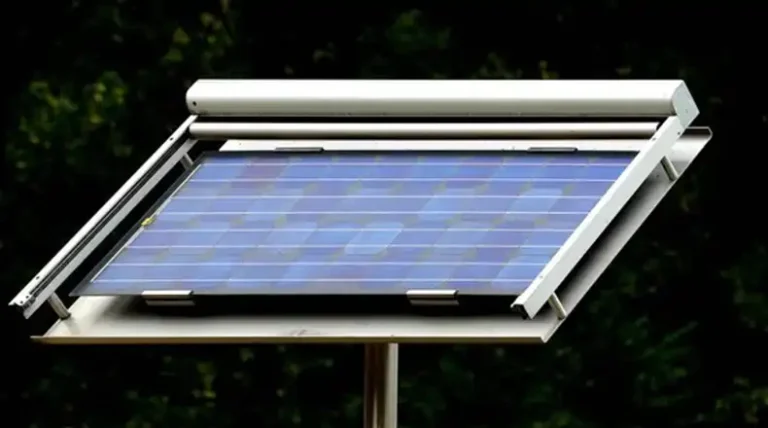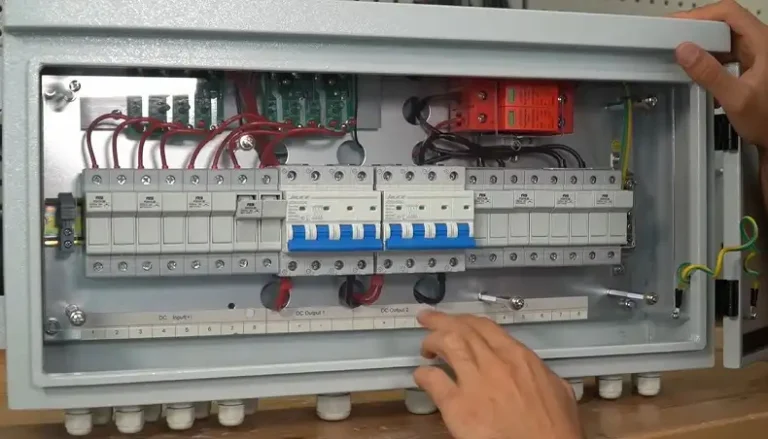Can I Mount Solar Panels Vertically?
Installing solar panels on your property can provide numerous benefits, including lower electricity bills and a reduced carbon footprint. However, determining the optimal placement and orientation of the panels is crucial to maximizing solar energy production. Many homeowners wonder – can I mount solar panels vertically?
The short answer is yes, you can mount solar panels vertically. But, vertically mounted solar panels will produce significantly less energy compared to traditionally angled panels. The ideal solar panel orientation is angled facing the sun, typically south-facing in the northern hemisphere. However, vertical solar mounts can work well for certain specialized applications.
Here I will discuss the pros and cons of vertical solar panel mounts, examine what factors impact their energy production, and outline some example use cases where vertical solar panel installation makes sense. Read on to learn everything you need to know about mounting solar panels vertically.
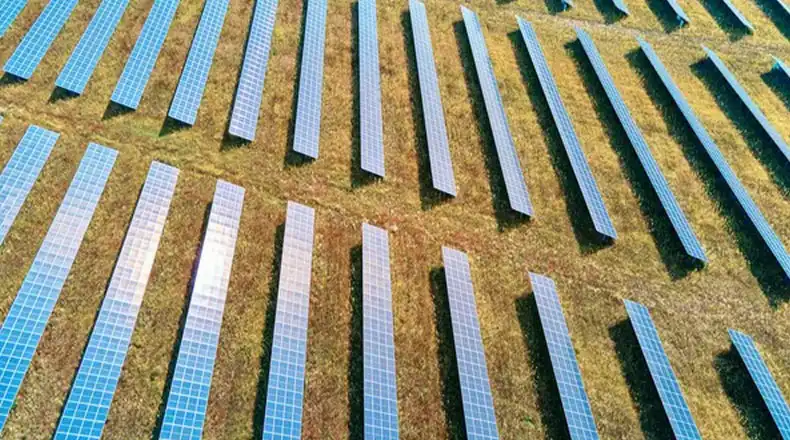
What Does It Mean to Mount Solar Panels Vertically?
Before examining the implications of vertical solar panel mounting, let’s clearly define what “vertical” means in this context.
When solar panels are mounted vertically, it means the face of the solar panel is oriented perpendicular to the horizon or ground. In other words, vertical solar panels face straight up or down, while horizontal solar panels lie flat.
Most often, vertical solar panels are mounted facing south (in the northern hemisphere), so the face points directly upwards. This contrasts with the typical angled orientation used in solar panel installations, where panels are tilted at an angle facing a southerly direction.
So,
- Vertical solar panel mounts are oriented perpendicular to the ground, while angled mounts are tilted.
- Vertical solar panels most often face directly upwards (south-facing in the northern hemisphere).
- Angled solar panel mounts are typically tilted at an angle facing south, often between 30-40 degrees depending on latitude.
Pros and Cons of Vertical Solar Panel Mounts
Mounting solar panels vertically has both advantages and drawbacks compared to angled panel mounts. Here are some of the key pros and cons to consider:
Pros
- Take up less horizontal space – Vertical solar mounts require less rooftop or ground area since panels are stacked vertically rather than angled.
- Can fit on uniquely shaped surfaces – Vertical solar mounts can be installed on tapered, irregularly shaped, or narrow surfaces. Angled mounts require rectangular flat spaces.
- Easier to clean and maintain – Accessing vertically placed solar panels is easier for cleaning and maintenance purposes.
- Aesthetic appeal – Some homeowners prefer the sleek, modern look of vertical solar panel walls compared to angled mounts.
Cons
- Generate less energy – Vertical solar panels produce significantly less electricity than optimally angled panels that directly face the sun’s path.
- Require sturdy mounting – Vertical solar panel walls require very robust, wind-resistant mounting to support the weight and wind loads.
- Difficult to adjust orientation – The orientation of vertical solar mounts is fixed. With tilting mounts, the angle can be seasonally adjusted.
- Prone to shading – Vertical solar panels are more susceptible to energy losses from shading by trees or structures. Angled mounts allow flexibility in spacing to minimize shading.
- Higher costs – Constructing sturdy vertical solar mounts often incur more upfront costs compared to angled racking systems.
The main tradeoff is that vertical solar mounting allows flexibility in tight spaces at the cost of significantly reduced energy production. Vertical mounts only make sense for specialized applications.
How Much Energy Do Vertical Solar Panels Produce?
Given the major disadvantage of reduced energy generation, how much less electricity do vertical solar panels produce compared to optimally angled mounts?
According to energy experts, the energy loss from vertical solar panel orientation can range from 10-25% compared to an optimally angled system facing the sun.
Of course, the exact energy production difference will depend on various factors, which will be covered in the next section. But in general, vertical solar panel orientation cuts energy output substantially compared to angled mounts that track the sun’s path across the sky.
To put some real numbers on it, let’s look at an example. For a 5 kW solar panel system, the expected annual energy production with an optimally angled 30-degree tilt would be about 6,500 kWh.
With a vertical orientation, that same 5 kW system would produce roughly 4,875 to 5,850 kWh annually. That’s an energy loss of 1,150 to 1,625 kWh per year by mounting the panels vertically rather than at the optimal tilt angle.
Over a 20-year lifespan, that amounts to 23,000 to 32,500 kWh less solar energy generated just because of vertical vs angled orientation – a massive difference.
These ballpark figures illustrate why vertical solar mounting leads to dramatically lower energy generation. While vertical solar can be useful for specialized applications, it comes at the cost of leaving a lot of potential solar energy production on the table.
What Factors Affect Vertical Solar Panel Productivity?
While we can provide rules of thumb for typical energy losses from vertical solar panel mounts, many factors impact the actual energy production results. Different variables that affect vertical solar panel productivity include:
- Geographic location and latitude: At higher latitudes, vertical mounts lose less energy production compared to angled mounts because the sun remains lower in the sky.
- Panel orientation: Vertical solar panels facing south (in the northern hemisphere) produce more energy than panels facing east or west. North-facing vertical panels produce very little energy.
- Local weather and cloud cover: Solar panels are less sensitive to orientation in consistently overcast climates. Clear sunny weather maximizes the advantage of angled panels.
- Shading from obstructions: Vertical solar panels are more prone to shading losses than angled mounts with adjustable spacing. Nearby trees or buildings exacerbate energy losses.
- Time of year: Vertical solar output suffers larger losses in summer months when the sun is high in the sky. The gap closes in winter when the sun stays lower.
- Use of reflectors: Positioning reflective surfaces near vertical panels can bounce additional light onto them and improve energy generation.
So while vertical solar arrays will universally produce less power than optimally tilted mounts, the magnitude of the energy loss depends on the specific project circumstances.
When Does Vertical Solar Panel Mounting Make Sense?
Although vertical solar panel orientation has major energy generation drawbacks, it can be a viable approach for certain specialized applications.
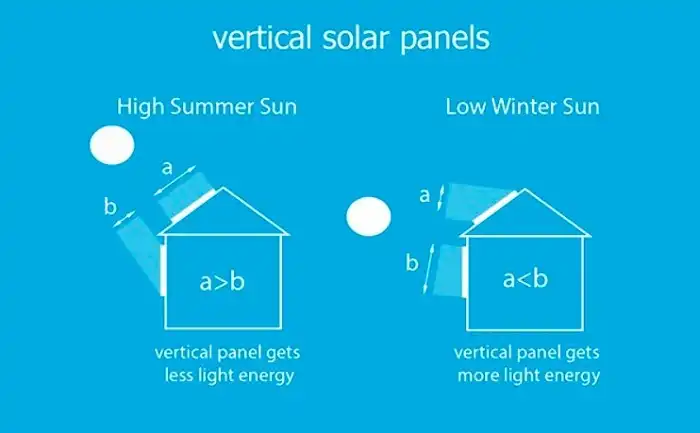
Here are some examples of situations where vertical solar mounts are sensible:
- Small surfaces – For mounting solar on narrow, irregularly shaped, or space-constrained areas, vertical orientation may be the only feasible option.
- Solar walls and sunshades – Vertical solar panels can double as aesthetic building walls, fences, or sunshades.
- Noise barriers – Solar noise barriers along highways often use vertical panel mounting.
- Limited southern exposure – If a roof lacks southern exposure for angled solar panels, vertical mounts on eastern, western, or northern faces may be preferable to no panels at all.
- Window awnings – Solar awnings on vertical windows often use vertically oriented solar panels.
- Weak rooftops – Vertical solar mounts avoid adding heavy angled racking loads to structurally weak rooftops.
- Low latitudes – Vertical mounting losses are minimized at equatorial latitudes where the sun remains high in the sky.
So in the right circumstances where angled solar panel placement is not possible or aesthetics are a priority, vertical solar mounting can be justified.
The Output of Mounting Solar Panels Vertically
I have installed two 5kW solar panels in Arizona where one is angled 57° and another is angled 0°. Here is the output I got annually:
| Month | Energy production from optimal installation (57 degrees) | Energy production from vertical installation (0 degree angle) |
| January | 550 | 450 |
| February | 620 | 510 |
| March | 710 | 380 |
| April | 780 | 320 |
| May | 800 | 260 |
| June | 720 | 180 |
| July | 730 | 210 |
| August | 750 | 270 |
| September | 690 | 390 |
| October | 700 | 550 |
| November | 580 | 520 |
| December | 540 | 530 |
| Total | 8170 kWh | 4570 kWh |
According to this table, you can hopefully understand that you can get the best output from vertical solar panels during the winter season. But usually, the vertical orientation leads to a large energy generation loss of 44% for this particular system and location.
Practical Considerations for Vertical Solar Installations
If you do opt to mount solar panels vertically, either out of necessity or choice, here are some key practical factors to take into account:
- Robust mounting structure – The racking system must be engineered to support the weight and wind/environmental loads exerted on the vertical solar array.
- Spacing for access and maintenance – Proper spacing between vertical solar panels allows easy access for cleaning and maintenance.
- Maximizing sun exposure – Seek a south-facing orientation and avoid shade from obstructions as much as possible to maximize inefficient vertical panel energy production.
- Reflectors to increase light exposure – Strategically placed reflector surfaces can bounce additional sunlight onto vertical panels.
- Rain and snow release – Enable drainage and snow shedding pathways to avoid buildup weighing down vertical solar panels.
- Inverter sizing – Don’t oversize the solar inverter, since energy yield will be reduced. Validate inverter capacity based on vertical solar modeling.
- Structural engineering approval – Local building codes likely require an engineer’s stamp of approval for large vertical solar arrays.
With smart design and engineering, vertical solar panel systems can be executed successfully in situations where vertical mounting makes the most sense. However, the energy production limitations must be considered.
Example Vertical Solar Installations
To provide a better visual understanding of vertical solar mounting in practice, here are some real-world examples of building installations using vertical solar panels:
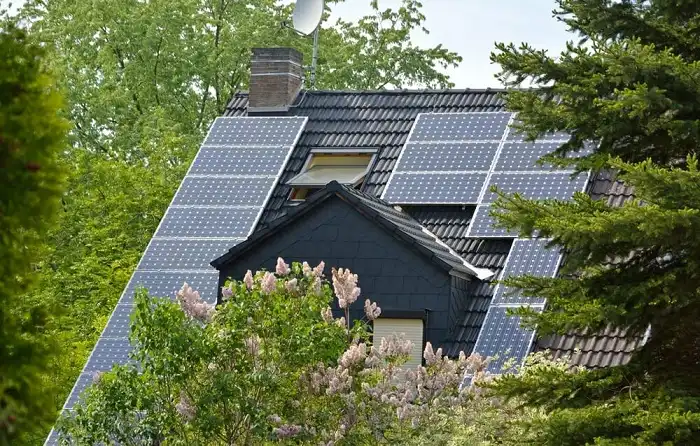
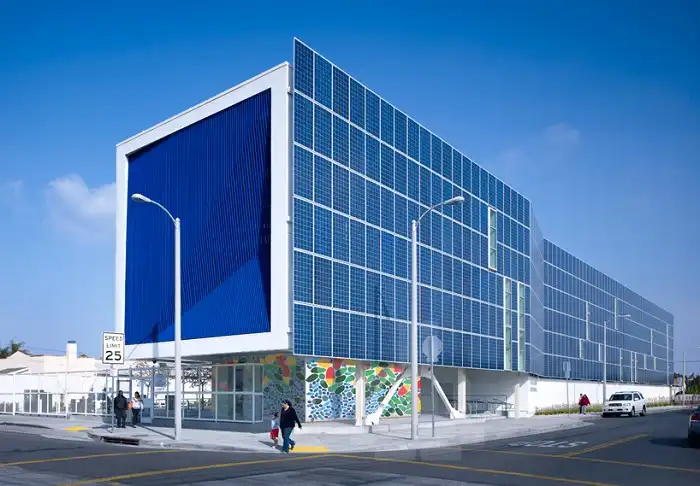
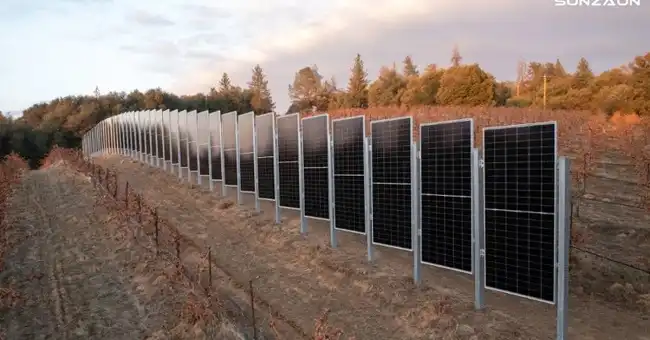

These examples illustrate some creative applications using vertically oriented solar panels on walls, rooftops, windows, and other building surfaces. When angled mounting is impractical, vertical solar orientation can allow buildings to generate some solar power in constrained spaces.
Is Vertical Solar Panel Mounting Right for Your Home?
When considering solar panels for your own home, should you mount the panels vertically?
For most residential homes, vertically oriented rooftop solar panels do not make practical or economic sense. The steep energy production losses inevitably lead to much lower electricity output and higher net costs for solar power.
However, if your rooftop space is extremely limited, or you have unique aesthetic preferences favoring the look of vertical solar walls, then the vertical approach may be worth exploring.
Work closely with your solar installer to model expected energy generation based on vertical solar panel positioning on your specific home. Only with detailed solar production simulations can you make an informed decision about whether vertically mounted solar makes sense for your property.
If you do opt for vertical orientation, be sure to take steps to maximize productivity, such as south-facing exposure, reflectors, and avoiding shading. Also, plan for increased costs for structural engineering and robust mounting equipment tailored for vertical solar panel loads.
For most homes, angled rooftop solar panel mounting remains the best approach to maximize electricity production. But in the right circumstances, vertical solar can be a viable technique for limited applications.
Wrapping Up
While vertical solar panels will produce substantially less energy, unique applications like noise barriers, carports, facades, and window awnings can justify the use of vertical orientation. When space is extremely constrained, vertical solar power production can eclipse no solar power at all. Overall, recognizing both the limitations and niche benefits of vertical solar arrays allows for informed decision-making. In the majority of cases, angled solar panel mounts are preferable. However, the option exists to install panels vertically when the circumstances call for it.
If you have any other questions about vertically mounting solar panels, don’t hesitate to leave a comment below! Thank you for reading.
Frequently Asked Questions
How Much Space Do 5 Kw Of Solar Panels Require?
For a 5 kW solar panel system using standard 60-cell panels, you would need about 400-500 square feet of roof space. Exact area requirements depend on the panel efficiency and orientation, but this gives a rough estimate. Vertical mounting reduces horizontal space needs.
Can You Mount Solar Panels Vertically On A Pole?
Solar panels can be mounted vertically on poles or ground mounts. This takes up minimal footprint space. However, the pole mounting structures must be extremely sturdy and engineered to handle the high wind loads on vertical solar arrays.
Should You Clean Vertically Mounted Solar Panels?
Yes, it is still important to periodically clean vertically mounted solar panels. While their vertical orientation sheds dust better than angled mounts, periodic cleaning maintains energy production. Vertical orientation provides easier cleaning access in many cases.
How Long Do Vertically Mounted Solar Panels Last?
When properly installed, vertical solar panel lifespan is comparable to conventional angled mounts, typically 25-30 years. The orientation does not affect panel durability. Key factors are using quality solar components and robust mounting structures engineered for vertical loads.

